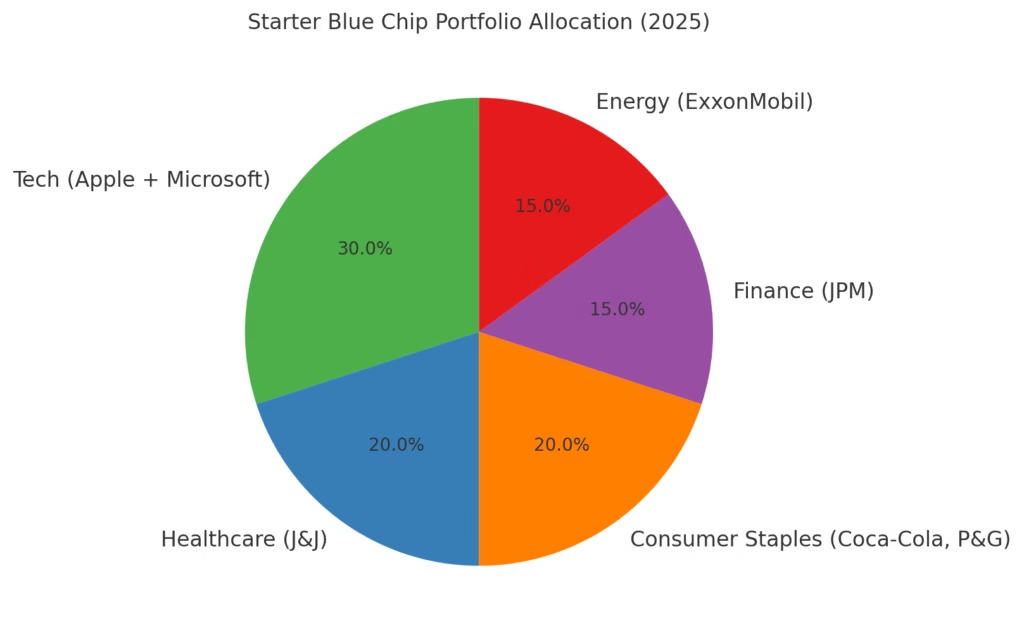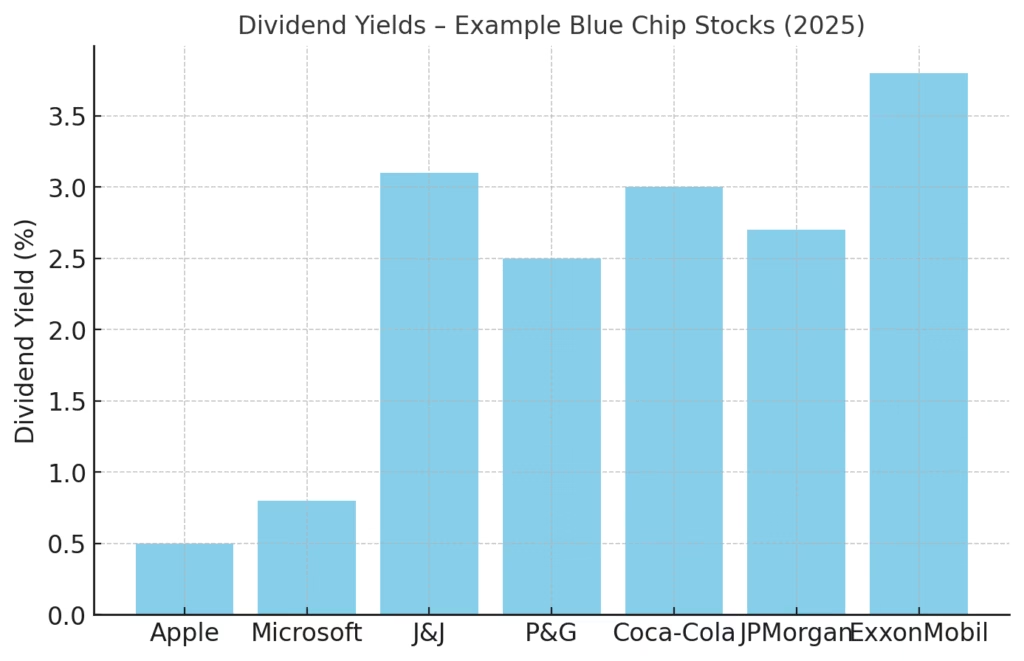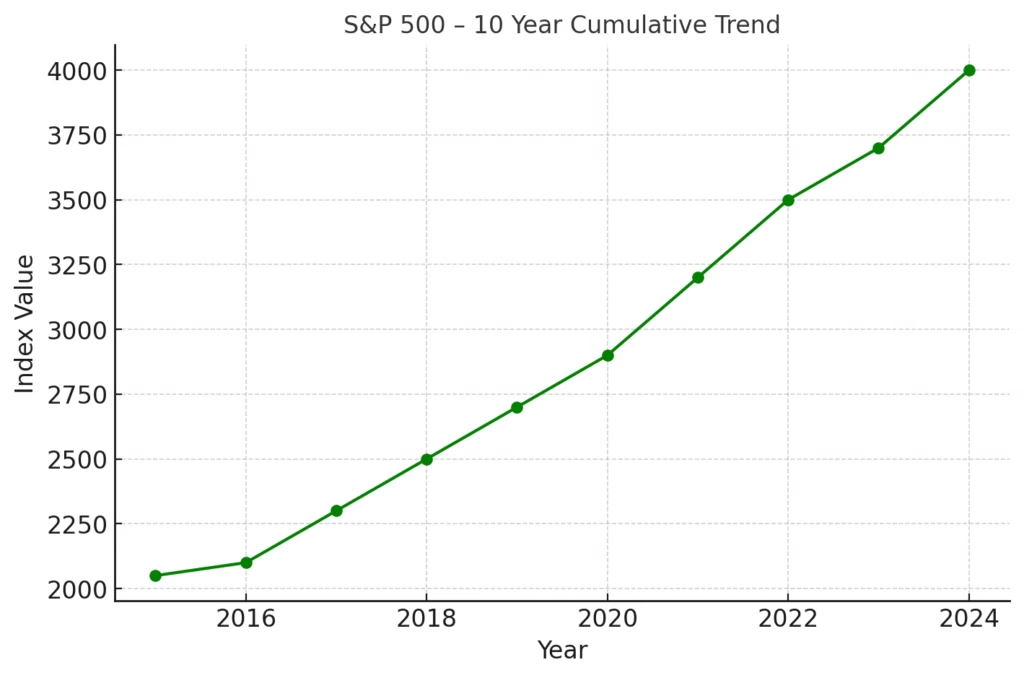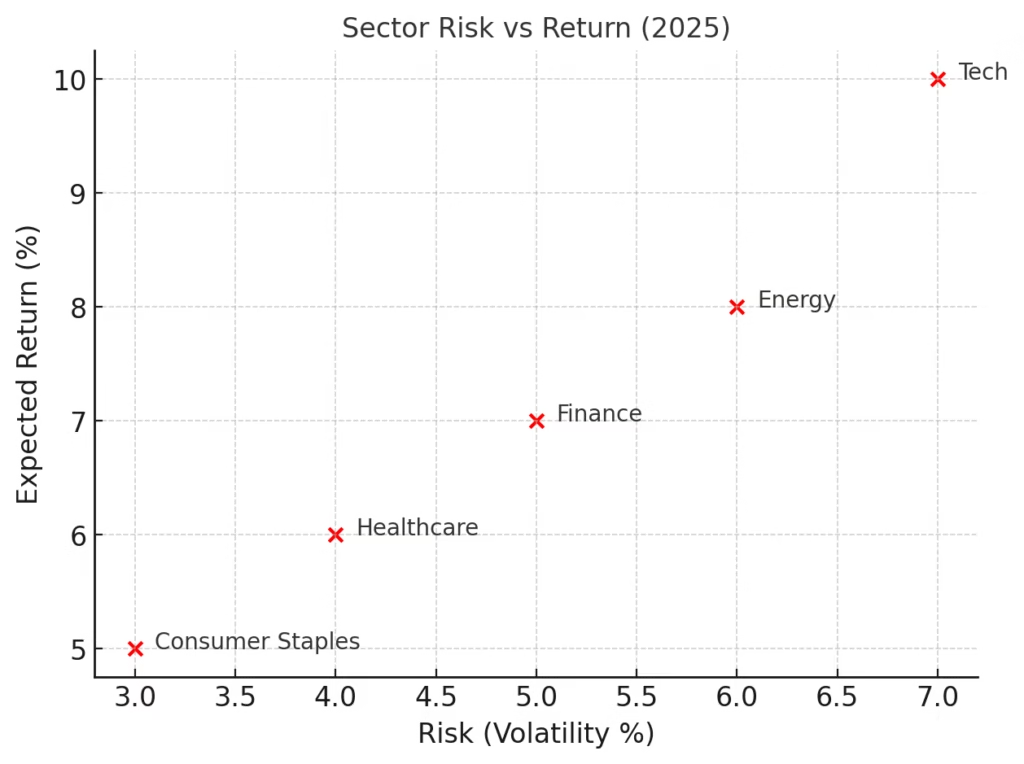
Why Your First Stock Portfolio Matters
How to create a stock portfolio is one of the most common questions new investors ask. If you are a beginner stepping into the world of investing, you might feel both excited and overwhelmed. After all, the stock market looks like a giant puzzle with thousands of companies, endless news, and constant price swings. Yet behind the noise lies something powerful, the ability to grow your wealth and achieve financial independence.
Think of a stock portfolio as your personal financial garden. Each stock is a plant you choose to grow. Some plants give quick flowers, others take years to bear fruit, but together they create a healthy ecosystem. For beginners, the challenge is knowing which seeds to plant, how many to water, and how to prevent weeds from taking over.
In this blog, you will learn 5 powerful tips that will help you start strong. We will cover the fundamentals of building a diversified stock portfolio, explore beginner-friendly strategies, and make sure you avoid rookie mistakes. You will also find interactive checkpoints and real-life examples, so this guide feels like having a mentor by your side.
By the end, you will have a clear plan for how to create a stock portfolio that not only survives but thrives. If you are new to investing, this beginner’s guide to the stock market explains the basics in detail

Tip 1: Start With a Clear Investment Goal
The very first step in creating a stock portfolio for beginners is not picking a stock. It is defining your goal. Ask yourself:
- Are you investing for retirement?
- Do you want to save for a down payment on a home?
- Are you simply curious and testing the waters?
Your answers will shape your stock portfolio strategies. For example:
- If you are investing for long-term retirement (20 to 30 years), you can afford to take more risks with growth stocks such as tech companies.
- If you are saving for a short-term goal (3 to 5 years), you should lean toward safer investments like dividend-paying blue chips.
- If you are investing for passive income, dividend stocks and ETFs (exchange traded funds) should be your focus.
Think of goals as your GPS. Without setting a destination, even the most powerful car will just wander around.
Mini-Quiz for You:
If you had $10,000 today, would you prefer to double it in 20 years or have reliable monthly income from it?
Drop your answer in the comment section below and see what other readers are choosing.

Tip 2: Understand the Basics of Diversification
If there is one golden rule for building a diversified stock portfolio, it is this: never put all your eggs in one basket.
Diversification simply means spreading your money across different industries, regions, and even asset types. Why? Because when one sector falls, another may rise and balance your overall portfolio.
Imagine you invest all your money into airline stocks. A global travel disruption (like COVID-19) would crash your portfolio overnight. But if you had also invested in healthcare, technology, and consumer staples, your losses would be cushioned.
Here’s a simple diversification structure for a beginner:
- 40 percent in US large-cap stocks (companies like Apple, Microsoft, Johnson & Johnson)
- 25 percent in international stocks (to benefit from global growth)
- 20 percent in dividend stocks or ETFs (for stability and income)
- 15 percent in emerging market or growth opportunities (for higher risk and reward)
This way, you are not overexposed to one market event.
Real-Life Example: During the 2008 financial crisis, investors who held only US bank stocks faced heavy losses. Those with diversified portfolios that included gold, healthcare, and international stocks recovered much faster.
Tip 3: Learn About Stock Portfolio Strategies
Now that you know your goals and the value of diversification, let’s explore actual stock portfolio strategies beginners can use.
- Core-Satellite Strategy
- Your portfolio has a core of safe, broad investments like index funds or ETFs.
- Around that core, you add satellite investments such as individual growth stocks.
- Example: 70 percent in S&P 500 ETF, 30 percent in Tesla, Nvidia, or other high-growth picks.
- Dividend Growth Strategy
- Focus on companies with a history of increasing dividends every year.
- Provides steady income and long-term wealth growth.
- Example: Coca-Cola, Procter & Gamble, Johnson & Johnson.
- Value Investing
- Made famous by Warren Buffett, this strategy involves buying undervalued stocks that have strong fundamentals.
- Requires patience and research but can deliver high returns.
- Growth Investing
- Focus on fast-growing companies in sectors like technology, renewable energy, or healthcare.
- Higher risk, but potential for massive upside.
Mini-Quiz for You:
Would you prefer to receive $500 in dividends every year or take a risk on a stock that could double in 5 years? Which fits your personality better?
Tip 4: Select the Right Stocks With a Beginner-Friendly Approach
Now comes the exciting part of creating your stock portfolio for beginners, choosing which companies to buy. But before you rush into buying the next hot stock you saw on Twitter or YouTube, let’s build a framework.
A beginner-friendly stock selection process should focus on fundamentals, financial health, and long-term potential rather than hype. Learning how to read a company balance sheet can help you evaluate a company’s fundamentals more confidently.
Here’s a simple three-step filter you can apply:
- Check the company’s fundamentals
Look for stable revenue growth, healthy profit margins, and manageable debt. Tools like Yahoo Finance or Morningstar provide free data for this. Example: Compare Company A with $5 billion consistent revenue growth vs. Company B that swings wildly up and down. Company A is safer for your portfolio. - Understand the industry
Ask: Is this industry likely to grow in the next 10 to 20 years?- Tech (cloud computing, AI, semiconductors) – high growth potential.
- Healthcare – steady demand regardless of economic cycles.
- Energy (oil vs renewables) – depends on global trends.
- Look at management and dividends
A company’s leadership and shareholder-friendly policies matter. Firms like Apple and Microsoft not only innovate but also return value through dividends and buybacks.
Pro Tip: As a beginner, consider starting with ETFs or index funds. These automatically spread your money across dozens or hundreds of companies, giving you instant diversification while you learn.
Mini-Quiz for You:
If you had to pick between a tech stock with no dividends but high growth or a utility stock with slow growth but 5 percent dividend yield, which would you choose? Drop your reasoning in the comments.

Risk Management: The Safety Net of Every Portfolio
Every investor dreams of big gains, but seasoned investors know that risk management is the secret sauce of long-term success.
Here’s how beginners can manage risk effectively:
- Position Sizing
Never put more than 5 to 10 percent of your money into a single stock. This way, if one company underperforms, it will not sink your whole portfolio. - Stop-Loss Orders
A stop-loss automatically sells your stock if the price falls below a set level. Example: If you buy a stock at $100, you can set a stop-loss at $85. This ensures you don’t lose more than 15 percent. - Regular Rebalancing
Over time, certain stocks will grow faster than others, making your portfolio unbalanced. Rebalancing means selling some winners and buying laggards to restore your target allocation.- Example: If tech stocks grow from 30 percent to 50 percent of your portfolio, you might trim them back to 30 percent to reduce risk.
- Emergency Fund First
Before you even invest, make sure you have 3 to 6 months of living expenses saved in cash or a liquid account. This prevents you from panic-selling stocks during unexpected emergencies.

Tools and Platforms to Build Your Stock Portfolio
Building a diversified stock portfolio is much easier today thanks to online tools and platforms. Beginners in the US, UK, Canada, Singapore, or Australia can all access user-friendly brokers and apps.
Popular Platforms for Beginners:
- United States: Robinhood, Fidelity, Charles Schwab
- United Kingdom: Hargreaves Lansdown, Freetrade
- Canada: Questrade, Wealthsimple
- Australia: CommSec, SelfWealth
- Singapore: DBS Vickers, Saxo Markets
Portfolio Tracking Tools:
- Yahoo Finance: Free watchlists and portfolio tracking
- Google Finance: Simple and integrated with Google Sheets
- Morningstar Portfolio Manager: Deeper analysis and ratings
- Personal Capital (US only): Combines investments and financial planning
These tools help you stay organized, measure performance, and adjust strategies. You can track your investments using the best stock screeners for beginners to stay organized and make informed decisions.
Real-Life Example:
Imagine you buy 10 shares of Apple at $170 each and 20 shares of Coca-Cola at $60 each. With Google Sheets linked to Google Finance, you can track daily changes automatically and even calculate dividend income.
Common Mistakes Beginners Should Avoid
Even with the best stock portfolio strategies, beginners often make avoidable errors. Let’s highlight a few and how to sidestep them:
- Chasing Hot Tips
Buying a stock because a friend or social media influencer said so usually ends in regret. Always do your own research. - Overtrading
Beginners often buy and sell too frequently. Remember, investing is not day trading. True wealth comes from holding good companies for years. - Ignoring Fees
Small trading commissions or fund fees add up over decades. Choose low-cost brokers and ETFs. - Panic Selling
When markets drop, emotions run high. But panic selling often locks in losses. Having a diversified stock portfolio cushions these blows.
Mini-Quiz for You:
What’s worse in your opinion: missing out on a potential big gain or losing money on a risky stock pick? Think about your risk personality and comment below.
The Psychology of Successful Investing
When people think about how to create a stock portfolio, they often focus only on numbers, charts, and ratios. But ask any experienced investor, and they will tell you that psychology is just as important as analysis.
Here are the biggest mental traps beginners fall into:
- Fear of Missing Out (FOMO)
You hear about a stock skyrocketing and rush to buy it at the peak. Later, the price falls, and you regret your decision. Fix: Stick to your strategy and only invest in companies you truly understand. - Loss Aversion
Research shows people feel the pain of losses twice as strongly as the joy of gains. This often causes beginners to panic and sell too soon. Fix: Remember that temporary price drops are normal in a diversified stock portfolio. Focus on the long-term trend, not short-term noise. - Overconfidence
After a few good picks, beginners often think they have a golden touch. This can lead to risky bets and oversized positions. Fix: Always stay humble and disciplined. Even the best investors are wrong sometimes.
Real-Life Example:
Warren Buffett once said, “The stock market is a device for transferring money from the impatient to the patient.” Beginners who build a diversified stock portfolio and stay patient tend to win over time.
Advanced Stock Portfolio Strategies for the Curious Beginner
Once you have mastered the basics, you may want to add more sophistication to your portfolio. Here are a few advanced strategies:
- Dollar-Cost Averaging (DCA)
Instead of investing all your money at once, you invest small amounts regularly, for example, $500 every month. This reduces the risk of buying at the wrong time and smooths out market volatility. - Sector Rotation
Different sectors perform well at different stages of the economic cycle. For example, consumer staples and healthcare are defensive during recessions, while tech and industrials shine during booms. You can tilt your portfolio accordingly. - Factor Investing
This strategy involves selecting stocks based on certain characteristics or “factors” like value, momentum, or quality. Many ETFs now offer factor-based exposure for beginners who want a smart approach without complex research. - Global Diversification
Don’t limit yourself to just US or UK companies. Markets in Asia, Europe, and emerging economies offer growth opportunities. A globally diversified stock portfolio spreads out risks and captures worldwide trends.
For examples of how high-net-worth individuals diversify their portfolios, you can see real strategies that manage risk effectively.
Practical Step-by-Step Action Plan for Beginners
Let’s turn all this theory into an actionable plan you can follow starting today.
- Define Your Goal
- Retirement? Passive income? Saving for a house? Write it down.
- Set Your Budget
- Decide how much you can invest each month. Even $100 consistently can grow into thousands over decades.
- Choose Your Platform
- Pick a reliable broker with low fees in your country.
- Start With Core Holdings
- Buy a simple ETF like the S&P 500 (US) or a global index fund as your foundation.
- Add Satellites
- Select a few individual stocks in industries you believe in.
- Diversify Across Sectors and Regions
- Ensure you are not overly concentrated in one industry.
- Track and Rebalance
- Use tools like Yahoo Finance or Morningstar to monitor progress and rebalance every 6 to 12 months.
- Stay Disciplined
- Ignore short-term noise and remember your long-term goal.
Frequently Asked Questions
1. How much money do I need to start a stock portfolio?
You can begin with as little as $100 on many online platforms. What matters more is consistency and discipline.
2. Should beginners buy individual stocks or ETFs?
ETFs are safer for beginners because they give instant diversification. You can later experiment with individual stocks once you gain confidence.
3. How many stocks should a beginner hold?
A good starting point is 8 to 15 stocks across different industries, plus ETFs. Too many stocks make it hard to track, too few increase risk.
4. How often should I check my portfolio?
Once a month is plenty. Checking daily can cause emotional decisions.
5. Can beginners really beat the market?
Most beginners are better off trying to match the market through index funds. Beating the market consistently is extremely difficult, even for professionals.
My Final Thoughts on Your Journey as a Beginner Investor
Creating a stock portfolio for beginners is not about chasing quick profits. It is about building a long-term system that supports your goals and grows with you. With the right stock portfolio strategies such as setting goals, diversifying, picking wisely, managing risk, and staying disciplined, anyone can build wealth over time.
Wealth doesn’t come from guessing the perfect entry point. It comes from giving your money enough seasons to grow. Even the smallest seed, planted today, can become a forest when patience and compounding work together.
So the next time you ask yourself how to create a stock portfolio, think of this guide as your starting map. Your financial garden is waiting, plant the seeds wisely, nurture them, and watch them grow.



